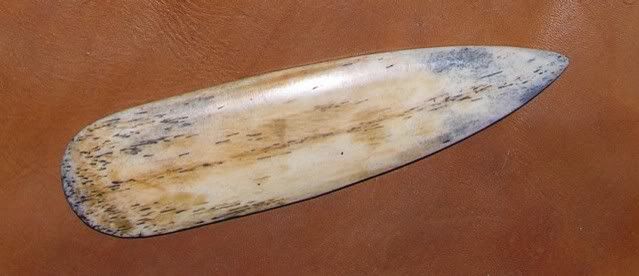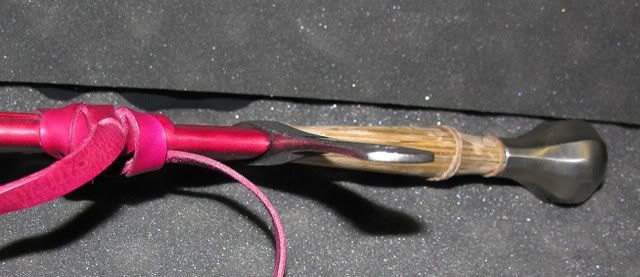A little background information - the sword is a Del Tin longsword which has been used by Chef for a number of years as a reliable reenactment and educational piece. The blade needed some minor touch-up, the grip had most definitely seen better days, and a new, proper scabbard and suspension was desired. I was given more or less free reign, with a couple of minor requests, such as "dark red", and "a suspension like the one you did for...". With that much latitude in design work, the head runs rampant, and the creative juices flow. We have exchanged lots of thoughts along the way for design elements, picking what we thought would be best.
As of today ( 11 February '08 ), the status of the project is:
Regrip: Finished.
Blade touchup: In progress.
Scabbard: Pending metal bits, final polish and assembly.
Hilt work: In design.
I will post photos in stages over the next few days, allowing time between installments for comments, questions, discussion, and input from Chef along the way, should he wish to add anything.
For the record, this has been one of the most enjoyable personal projects I have had the pleasure to work on. As has been mentioned elsewhere by a number of other folks, Chef de Chambre is both a gentleman of the highest calibre, and a passionate scholar/practitioner. Thanks a ton, my friend!
So... on to some photos and commentary!
________________
First up is the photo series of the new grip project. Unfortunately, I had taken the old leather grip cover off (which took minimal effort... it was totally worn out) before photos.
Here's a shot with just the bare wood core. Shreds of the old leather are still evident pinched between the grip core and the hilt components. Also, the spiral cord wrap is still ghosted on the core as well. With the amount of service use the sword has seen, it was due for some TLC.
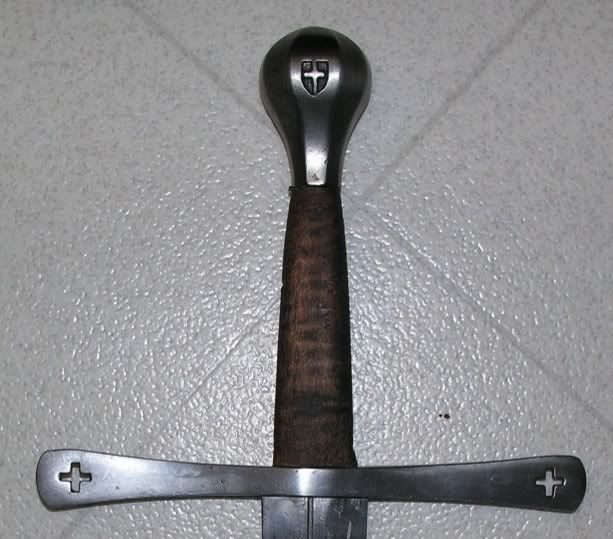
Once the leather was off, I took a close look at the wood core. It had actually started to crack. Rather than patch it back together, we decided it might be prime time for a new look altogether. Chef, Shan-Aan (my lovely bride), and I put our heads and practical WMA/reenactment experience together, and decided to go with a nice waisted grip. I split the old core off, and discovered the cause of the impending failure of the core... the guard had become unseated! While I can do cutlery work, my wife is more skilled and experienced in the craft, so I turned the sword over to her. She re-seated the guard, and peened it in place to soundly secure it, and then fashioned a new grip core. We affixed it to the tang, and I added cord risers. Here are three pics... front, profile, and in-hand.
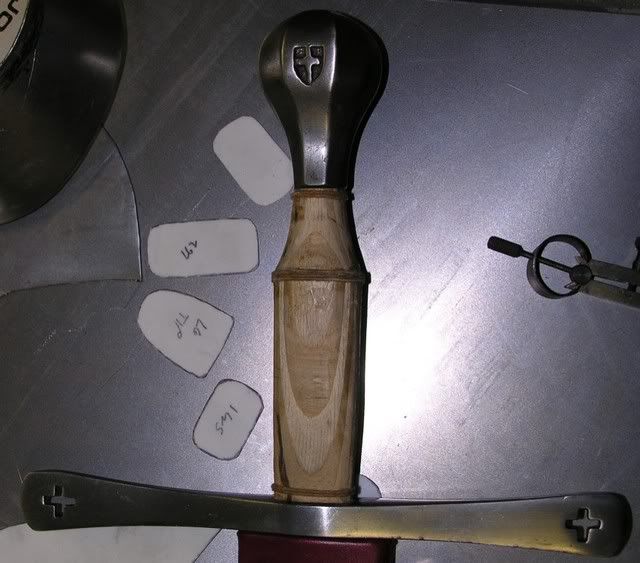

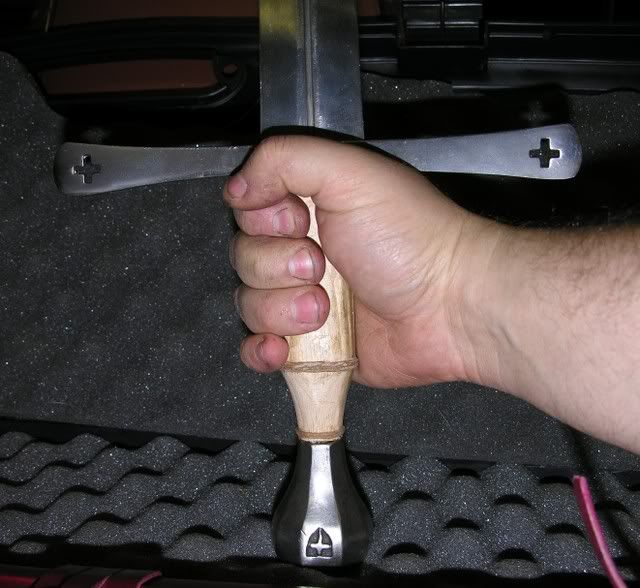
I re-wrapped the grip in leather, and bound it in cord until it dried. Here it is looking all mummy-like:

Unveiled:
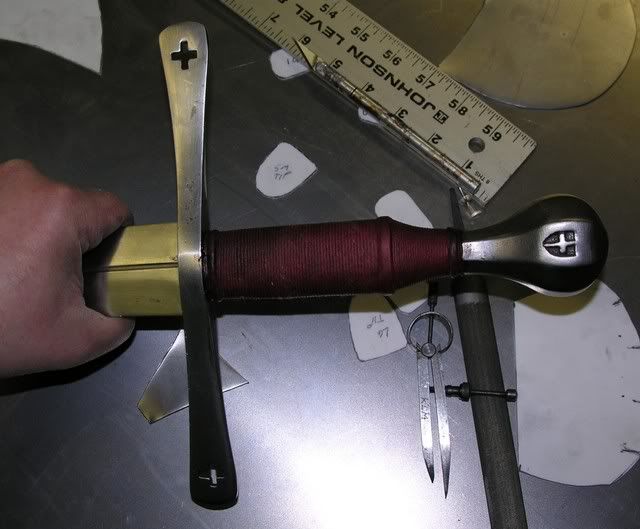
And finally cleaned up and treated:
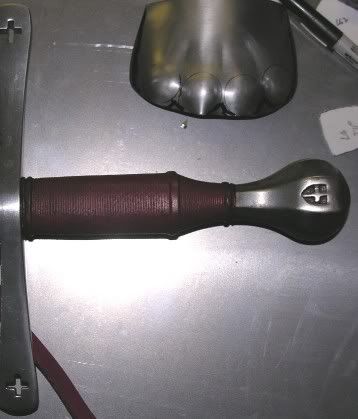
While the sword handled nicely with the old grip, the new one really makes it feel fantastic. I also believe it looks much more elegant now. I particularly like the way the grip's waisted curves compliment so wonderfully the curvature of the pommel, and how it relaxes back into the grip, filling the hand nicely, and allowing the repositioning of the hands quickly and easily as is so prevalent in Liechtenauer's tradition. (Yeah, it was really tough, but I had to play with it for a while... you know... just to make sure it was going to be suitable and all...








